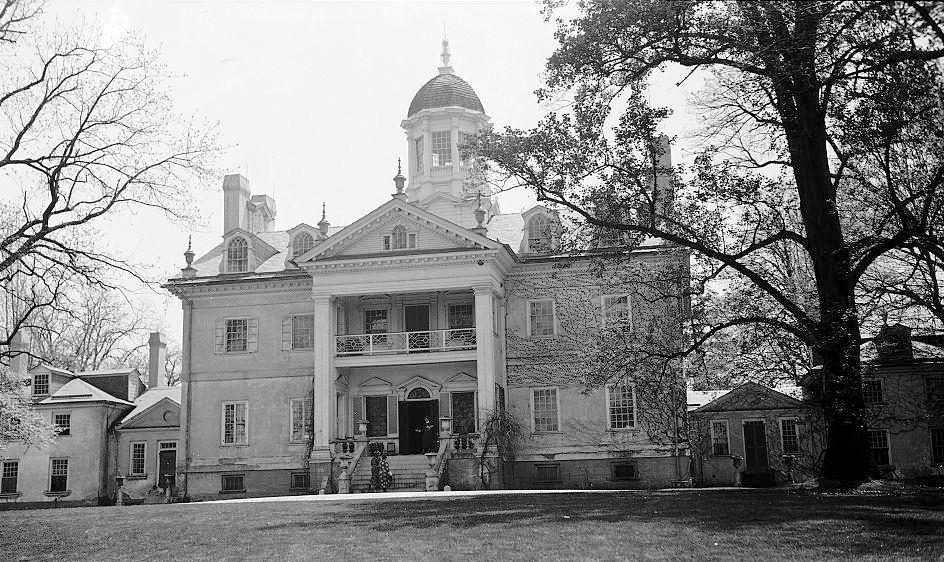Hampton Mansion, Towson Maryland

The tract of land on which Hampton Mansion was built had been acquired in 1735 by Colonel Charles Ridgely (1702-1772) from Clement and Ann Hill. The 1500 acre tract, "Northampton," had been inherited by Ann Hill from her father, Henry Darnall, who had patented it in 1695. The land, in the Gunpowder River valley of Baltimore County, formed the nucleus of the Ridgely holdings which at one time totaled more than 24,000 acres.
Captain Charles Ridgely (1729-1790), Colonel Ridgely's son and for whom Hampton Mansion was built, inherited the property in 1772 after his father's death. The Captain died July 28, 1790, six months after Hampton Mansion traditionally was completed. His wife, Rebecca Dorsey Ridgely (1739-1812), according to his will had the option to retain eight acres and the house in which she and Captain Ridgely lived prior to the completion of the mansion, probably the Overseer's House, or the mansion and 300 acres.
Being childless. Captain Ridgely left the remainder of the estate to his four nephews, provided they changed their names to Ridgely. By an act of the Maryland legislature, Charles Ridgely Carnan (1760-1829) became Charles Carnan Ridgely. As principal devisee and residuary legatee of his uncle's will, he assumed title to much of the estate. By Rebecca's own testimony in a letter of October 1, 1790, she was unhappy with the situation and Charles Carnan's assumption of the estate. On January 17, 1791, apparently after having decided not to live in either house, she signed an agreement with Charles Carnan to exchange a tract of land, "Dimmit's Delight", and other considerations including a house, "Auburn," for her rights, claims and interest to Hampton. Thus, the title to the mansion with its adjoining acres was transferred to Charles Carnan Ridgely, who was married to Priscilla Dorsey (1762-1814), Rebecca's younger sister. The estate was inherited by John Ridgely (1790-1867), in 1829 when his father died. After John's death in 1867, the house was inherited by his son Charles (1830-1872), who bequeathed it to his son, John (1851-1938). The estate was left to John Ridgely, Jr. (1882-1959) in 1938, who sold the mansion and adjoining forty-two acres south of Hampton Lane to the Avalon Foundation and its donor, Mrs. Ailsa Mellon Bruce, in 1946. The foundation subsequently transferred it to the National Park Service under the condition that the Society for the Preservation of Maryland Antiquities would maintain the house after it was restored by the Park Service. The Certificate of Title from the Avalon Foundation is dated January 22, 1948. On May 1, 1949, the house was officially dedicated and passed into the custody of the Society for the Preservation of Maryland Antiquities. John Ridgely, Jr., who had sold much of the adjoining land for suburban development, moved to the Overseer's House, north of Hampton Lane. After his death in 1959, his wife, Jane Rodney Ridgely, like previous Ridgely widows, received dower rights to the estate that maintains the Ridgely family burial ground east of Hampton National Historic Site.




